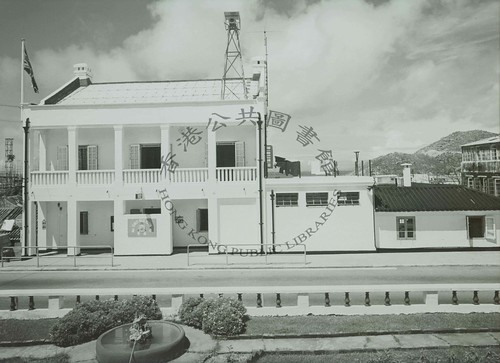Articles of Interest 1560-1960
 |
| Name: | Map of Nam Tau Jaai |
| Year Made: | 1581 |
| Maker: | The staff of the Viceroy of Cong Ng |
| Description: | A map of Nam Tau, or Nantou(p), Naval Base 南頭寨, the governance of which had included present day Hong Kong. Nam Tau was one of the six naval bases established in Canton (Guangdong) province in 1560s. Initially, it had a garrison of 1,486 troops and 53 battle vessels of various sizes, and was later on expanded to 2,008 troops and 112 vessels in 1591. Fat Tong Mum in Sai Kung and Tai O on Lantau Island each were maned by 200 troops. This map, printed in the Ming (Dynasty) military history book entitled “Record of the Office of the Supreme Commander at Cangwu 蒼梧總督軍門志”, shows the Kowloon Peninsula, part of the Hong Kong Island and the Lama Island. Cangwu county 蒼梧縣, which is a part of Wuzhou city 梧州市, has been known as the water gateway of Guangxi province. |
 |
| Name: | Chart of the Pearl River Delta |
| Year Made: | 1735 |
| Maker: | Vereenigde Oost-Indische Compagnie (the Dutch East India Company) |
| Description: |
 |
| Name: | Chart of Hong Kong |
| Year Made: | 1841 |
| Maker: | an expert suveyor, Commander Edward Belcher of the Royal Navy who landed on Possession Point at the north shore Hong Kong Island and made the first survey of Hong Kong harbor. |
| Description: | A biographical sketch of Edward Belcher: b.February 27, 1799 Halifax, Nova Scotia - d.March 18, 1877 London; midshipman, Royal Navy (1812); surveyor, Frederick William Beechey's expedition to the Pacific and Bering Strait (1825); commanded a surveying ship to map strategic areas in north and west coasts of Africa, South America and Asia/Pacific (1830s); landed in Hong Kong and made the first British survey of Hong Kong harbor (1841); commanded a government Artic expedition (1852), a searching party for the lost John Franklin (b.1786-d.1847), lost four in the five ship convoy and was court-martialed but acquitted; promote to rank of an admiral (1872), after his last active service; naming honor: Belcher's Street 卑路乍街 and Belcher Bay 卑路乍 in Kennedy Town. |
 |
| Name: | The Ordnance Map of Hong Kong |
| Year Made: | 1843 |
| Maker: | Lieutenant Thomas Bernard Collision, Royal Engineers |
| Description: |
 |
| Name: | Canton and its Approaches, Macao and Hong Kong |
| Year Made: | 1852 |
| Maker: | Society for the Diffusion of Useful Knowledge |
| Description: |
 |
| Name: | Map of Sun On County |
| Year Made: | ca.1870 |
| Maker: | unknown |
| Description: | Hong Kong Island, Kowloon and the New Territory were all parts of the Sun On County 新安縣. |
Chart of Hong Kong (1878)
Mader: Edward Belcher
Suvey Map of Kowloon Peninsula (ca.1880)
Maker: most probably the Royal Engineers
Map of City of Victoria (ca.1880)
Maker: unknown
A map entitled "Map of Hong Kong and British Kowloon" (1888)
Maker:
Probably is the first printed map that was made available to the general public
A map entitled "Map of the Peak District, Hong Kong" (1888)
Maker:
Map of the City of Victoria (1890)
Maker:
Map of Hong Kong (1897)
Maker: unknown
Hongkong, Kau-Lung (Kowloon), and Adjacent Territories (ca.1900)
Maker: unknown
Please pay attention to the legends:
- Territory under Convention of 1860 - Boundary under New Convention 1898
Postcard (1905)
Showing a map of the Central District
Plan of the City of Victoria, Hong Kong, corrected in 1907
Maker: unknown
Map of Naval Yard (1909)
Maker:

A map entitled "Environs of Hong Kong and Kowloon" (1915)
Maker: unknown
Map of Hong Kong and New Territory (1902)
Maker: unknown
Aeroshell Map of Hong Kong (Kai Tack) Aerodrome (1937)
Maker: unknown
Map of Kowloon Bay (ca.1937)
Mader: the Imperial Japanese Army
Ordinance Survey Map (1941)
Mader: the Imperial Japanese Army
The map was made probably just before the invasion. The map shows many of the British defense positions, particularly those located at Shing Mun and Tai Mo Shan.
A map depicting the defense of Hong Kong Island in December 1941
The 228th, 229th and 230th Infantry Regiments, 38th Division of the Imperial Japanese Army crossed the Victoria Harbor on December 18 from Kowloon Peninsula. The 'black arrows' show the Japanese lines of advance; the red ones show the approximate British front lines at times indicated. Hong Kong fell on Christmas Day. Date of this map unknown, maker unknown.
Order of Battle / British Commonwealth
Infantry
2nd Battalion, The Royal Scots; 1st Battalion, The Middlesex Regiment; 5th Battalion, 7th Rajput Regiment; 2nd Battalion, 14th Punjab Regiment; The Winnipeg Grenadiers; The Royal Rifles of Canada; Hong Kong Chinese Regiment, Hong Kong Volunteer Defense Corps
Artillery
8th Coast Regiment, Royal Artillery; 12th Coast Regiment, Royal Artillery; 5th Anti-Air Regiment; 1st Hong Kong and Singapore Royal Artillery; 956th Defense Battery, Royal Artillery
Supporting Units
Royal Engineers; Royal Army Service Corps; Royal Army Medical Corps; Royal Signals; Royal; Army Ordnance Corps; Royal Army Dental Corps; Royal Army Pay Corps; Military Provost Staff Corps; Hong Kong Mule Corps
Aerial Surveillance Photo of the Samshuipo POW Camp[1], entitled "Sortie WASP-385, 16 January, 1945" (1945)
The two locations along the shoreline, marked 'Probable Areas of Camps', were probably points at which infiltration would undergo for good reasons.
A map entitled "Plan of Central District, City of Victoria, Hong Kong" (1957)
Mader: Crown Lands & Survey Office, Public Works Department.
I am quite surprised to learn that the name 'City of Victoria' remained in use in the 1950s.
__________________________________________
[1] The Sam Shui Po Camp was a permanent British military encampment, and between New Year's Eve 1941 and August 1945 was POW camps for British military personnel.
- END -





































